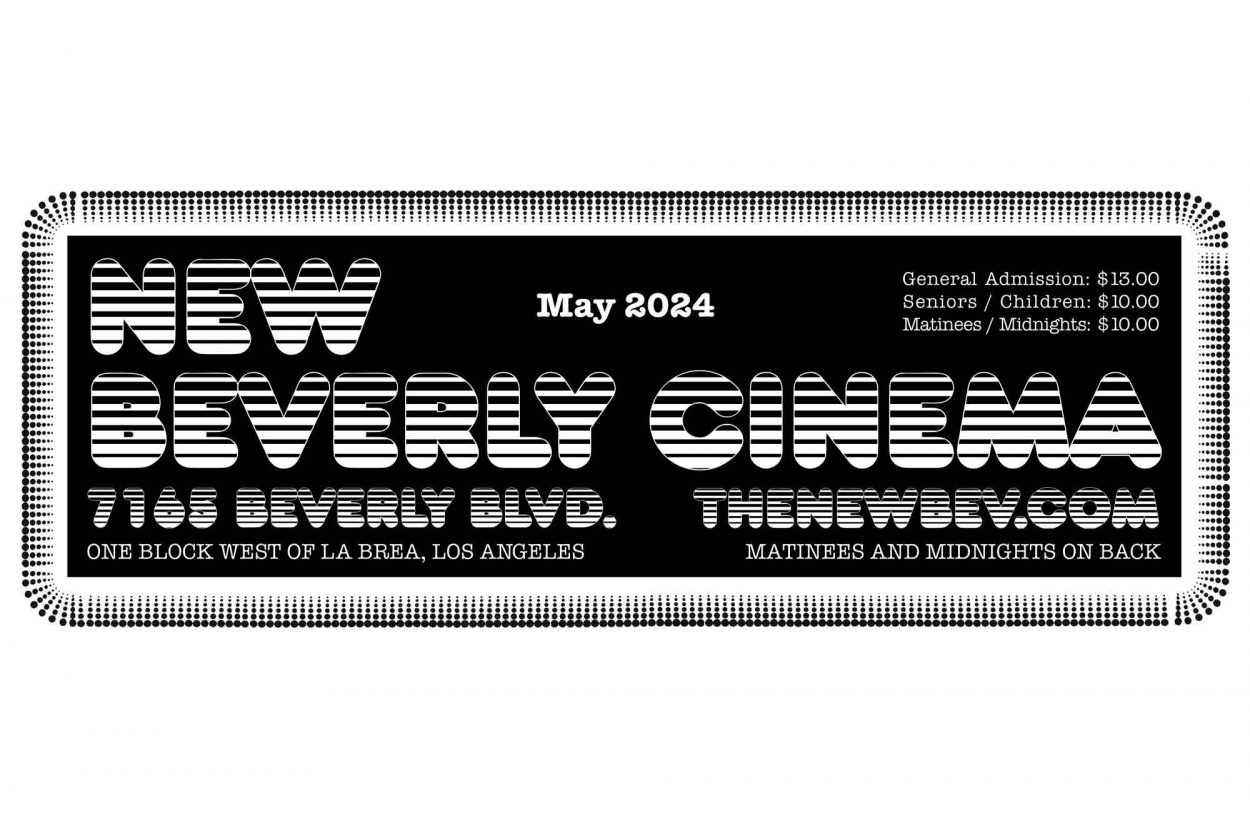“Create your own visual style. Let it be unique for yourself and yet identifiable for others.” – Orson Welles
“He [Ed Wood] was too heartfelt a man. You know what happens to people who are too heartfelt. Most of them kick the bucket that way.” – Maila Nurmi a.k.a. Vampira
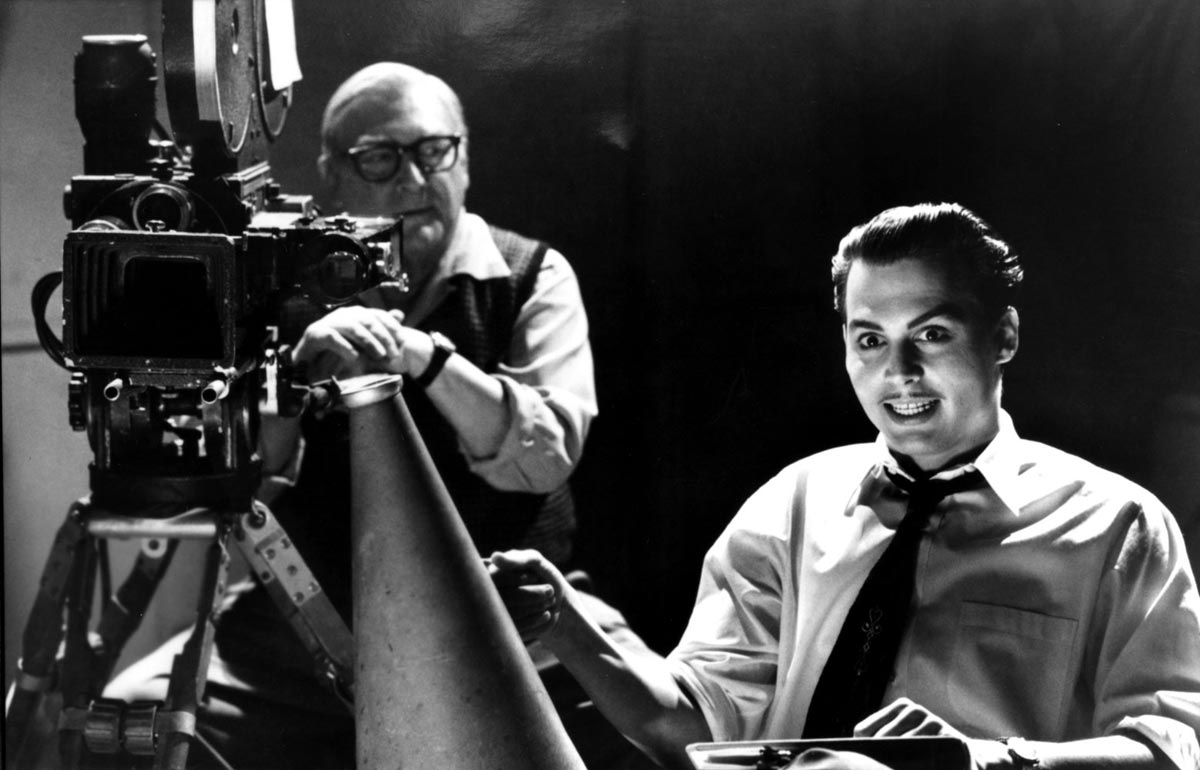
There are moments in Ed Wood’s Glen or Glenda that I find not only moving but gorgeously, dreamily haunting, unlike anything I’ve ever seen. I find all of Glen or Glenda uniquely beautiful, in fact – a work of surrealistic confession released as an exploitation picture, but avant-garde without calling itself avant-garde or likely, not knowing what that even meant. There are certain scenes, among many (including Bela Lugosi and buffalo) that I find stirring: Ed Wood playing Glen (and Glenda) is walking down a Los Angeles street where he stops at a shop window and looks at a mannequin. He’s wringing his hands, nervously, and we understand why. In an earlier scene we saw this same man walking down the same street only, in women’s clothes. He was Glenda then. As Glenda he had paused to look at the mannequin in the display and even posed, briefly, checking his looks against the molded woman trapped in glass. He walked away, despairingly. Now, this “normal” looking handsome postwar 1950’s fella in the acceptable uniform of the time (a suit) gazes again at the lovely garments in the window. He looks as trapped and as unhappy as when he was wearing women’s clothes in public (in private he can relax in his softer attire). It’s a lovely, allegorical shot – Wood’s Glen and that mannequin juxtaposed against one another – the glass, the perfected deadness of the female figure a window away from the troubled guy on the street, the power of such a simple everyday thing creating such longing and misery.
The next scene, a flashback crafted rather ingeniously, and clearly on the cheap, is startlingly dreamlike. We look at a girl’s long white dress hanging in a dark room, practically glowing, as if the most heavenly object on earth. No human is seen; there’s only a dress. Off screen we hear younger Glen asking his parents if he can wear the dress to a Halloween party. We hear his father’s voice scold: “There are names for boys who go around wearing women’s clothes.” We then hear his mother’s voice, encouraging him, encouraging him too much, revealing how she prefers him to look: “You go ahead and wear your sister’s dress, Glen. You always did look better as a girl than you do as a man.”
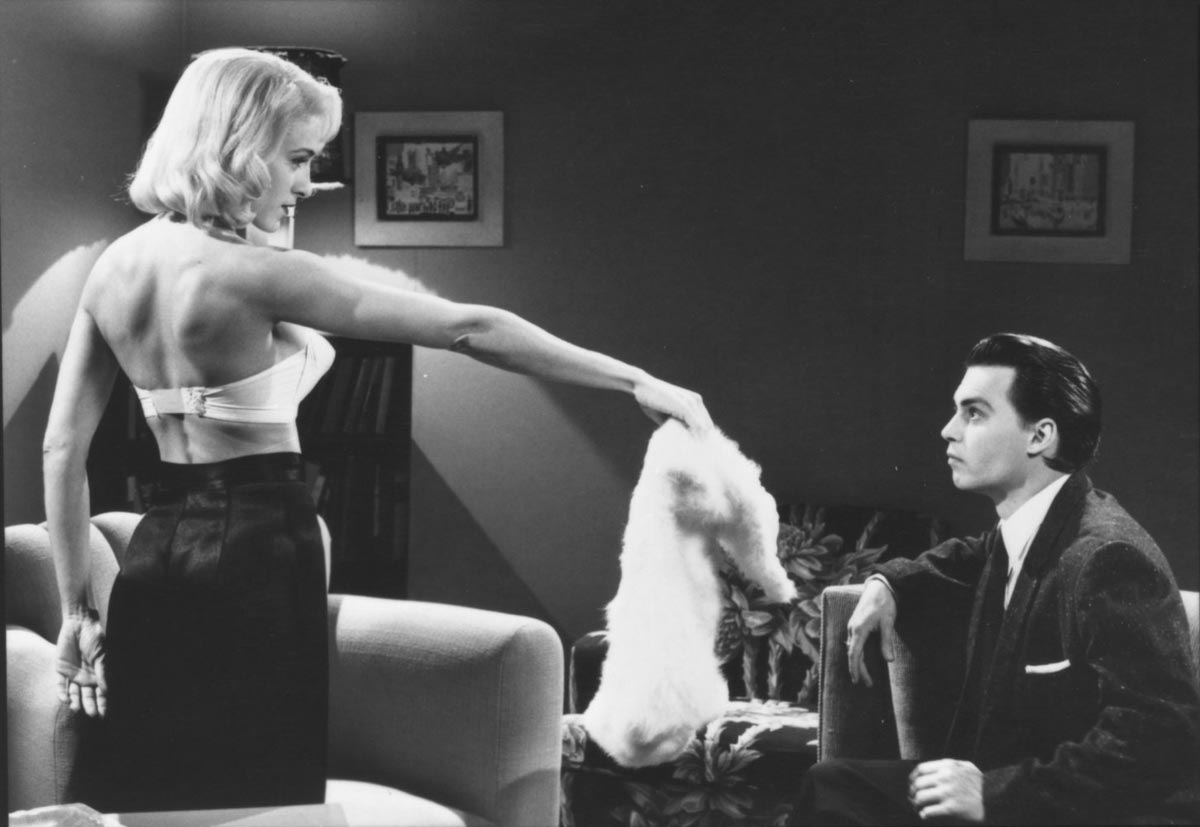
“You go ahead, Glen” . . . He did. And this wasn’t always easy for Wood, but it certainly made him an individual, a progressive and an obsessive, ahead of his time. Flash-forward from that pretty white dress and those disembodied voices and that Glenda get-up and the mannequin, and to 41 years later, 1994, to Tim Burton’s Ed Wood. There’s that troubled man on screen, again looking at pretty things in the window, but here he’s pretty Johnny Depp in an extraordinary, disarmingly loving tribute made by a director at the top of his game (Burton, not Wood, though I’ll continue to throw down for Glen or Glenda as Wood’s masterstroke). Among many of the picture’s excellent, funny and intriguing re-creations of Wood’s direction (Bride of the Monster and the octopus is notable, as is everything to do with Plan 9 from Outer Space), Ed Wood shows the auteur crafting that mannequin scene I described earlier. I loved seeing this. Wood, clad in the same Glenda gear, walks past the window, all soft angora, skirt and heels, pausing briefly before striding forlornly out of the frame and then . . . “Cut!” Wood continues: “Print that! Let’s move on!” When asked, quite sensibly, if he needs a second take for protection, Wood exclaims with exuberance: “What’s to protect? It was perfect! Come on!” Gently ribbing Wood’s quickie takes and absurd directorial confidence (or mere economy), the picture nevertheless celebrates him for such brashness. And when you watch Glen or Glenda, that shot is nearly perfect. Perfectly bad, as many think so, or perfectly interesting, perfectly perfect as I think so.
Before shooting this scene Depp’s Wood delivers a speech to his crew: “Everybody, we’re about to embark on quite a journey. Four days of hard work. But when it’s over, we’ll have a picture that’ll entertain, enlighten, and maybe even move millions of people!” You get both the joke and the pathos. Anyone who knows Wood’s career knows that, of course, millions of people were not moved seeing this picture because millions of people did not see the picture back then. It was dumped to a limited market. And for those who did see the film, many of them likely stared at it, confused. Some fell over in gales of laughter. (I’m going to believe there were a few souls out there who actually appreciated the movie and, as per Wood’s wishes, were moved by it. Maybe it helped someone.) But whatever the case, that Wood hoped for such a thing – in part to keep up the spirits of his crew, in part to delude himself, and in part because he really was crafting a personal statement to open the minds of a square, conservative 1950’s America – is a lovely testament to everything he was as an artist and as a man.
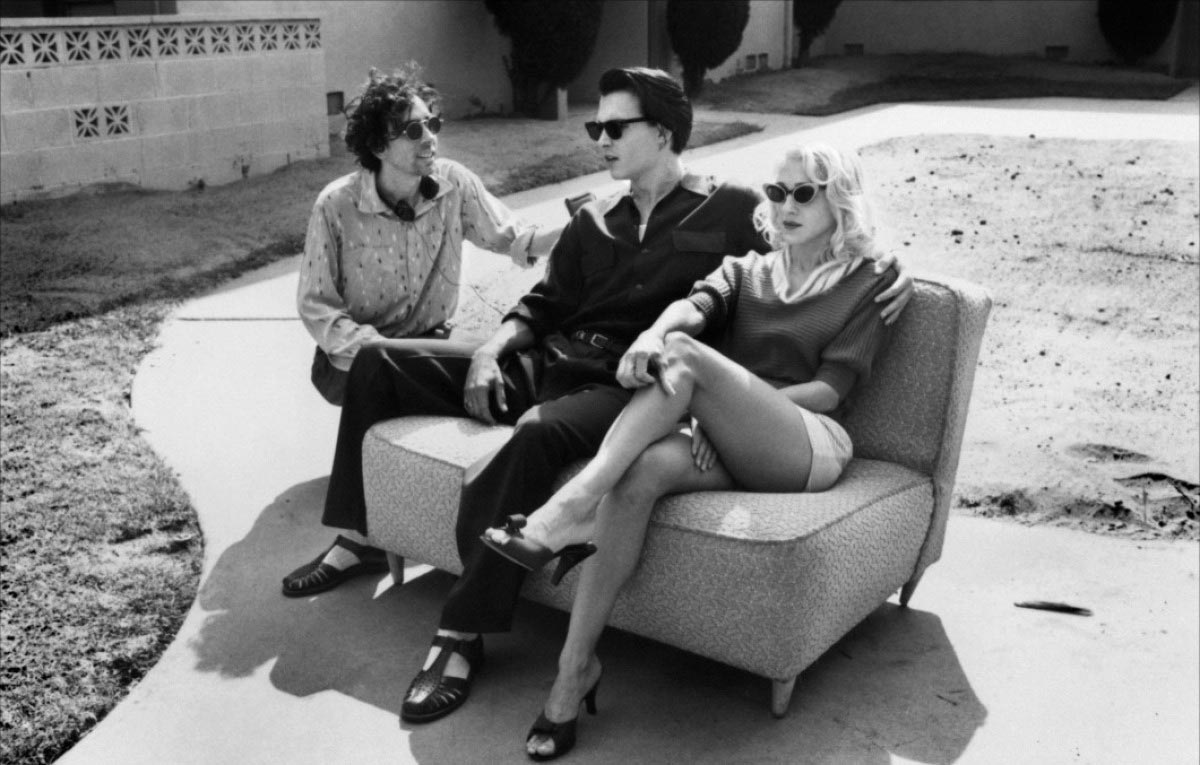 Director Tim Burton, Johnny Depp and Sarah Jessica Parker on the set of Ed Wood
Director Tim Burton, Johnny Depp and Sarah Jessica Parker on the set of Ed Wood
Ed Wood digs into these admirable/delusional qualities without being overly earnest, without being snarky, without being saccharine. Burton strikes just the right tone of endearing madness, lyrical sweetness and the harsh realities of the business, while never making fun of Wood. A mean movie could have been made when taking on a figure largely considered the worst filmmaker of all time (of course I think that title is absolute rubbish), and Burton, Depp and screenwriters Scott Alexander and Larry Karaszewski were having none of that. Burton directs with clear fondness and an identification with the outcast, showcasing a man both amazing to behold and entirely recognizable. Burton not only loves an outsider, but further, he loves a fringe dweller who appreciates a person now living on the fringe – chiefly Bela Lugosi.
I also know that certain directors, either in the midst of making a film or enduring critical scorn upon releasing a film, have related to Edward D. Wood, Jr. at one time or another. Alexander and Karaszewski, certainly related to Wood and say as much in their introduction to their published screenplay. Reeling from a disappointing experience with their originally darker, more subversive script for Problem Child, a movie they were fired from and subsequently left out of the process when it was “dumbed down” and then reviled upon release, they, as they said, “started identifying with Ed Wood.” A fascinating figure to the screenwriters while in college, their feelings for Wood deepened as they waded through the nastiness of the industry. They wrote:
“Before the Problem Child experience, we probably would have written a campy, mean-spirited Ed Wood film – the obvious approach. But now, after our critical lambasting, we looked at Ed in a different light. Sympathetically. We conceived Ed Wood as a rebuttal to the usual film biography: The Great Man Story. We saw Ed as the Anti-Great Man, a loser who could never get things right . . . Yet we saw a subversive purity, a screwball who wouldn’t compromise his vision, even though he was ferociously wrong.”
But wrong doesn’t mean there is a right way, necessarily, filmmaking and obsession aren’t that simple, and the screenwriters would agree, crafting a gorgeous story – heartfelt, funny, strangely inspiring, and sad. Earlier in this essay, they laud Wood for his singularity and personal drive: “Working in the world of grade-Z programmers intended for drive-ins and grindhouses, Ed didn’t actually produce usable exploitation. His films were less concerned with entertainment value than with getting his obsessions and strange passions expressed on screen. Angora, dead bodies, space monsters, old cowboy actors, pleas for universal tolerance, stock footage . . . Ed felt compelled to make cloth out of these burning issues. And if the results were bewilderment or boredom . . . so be it.”
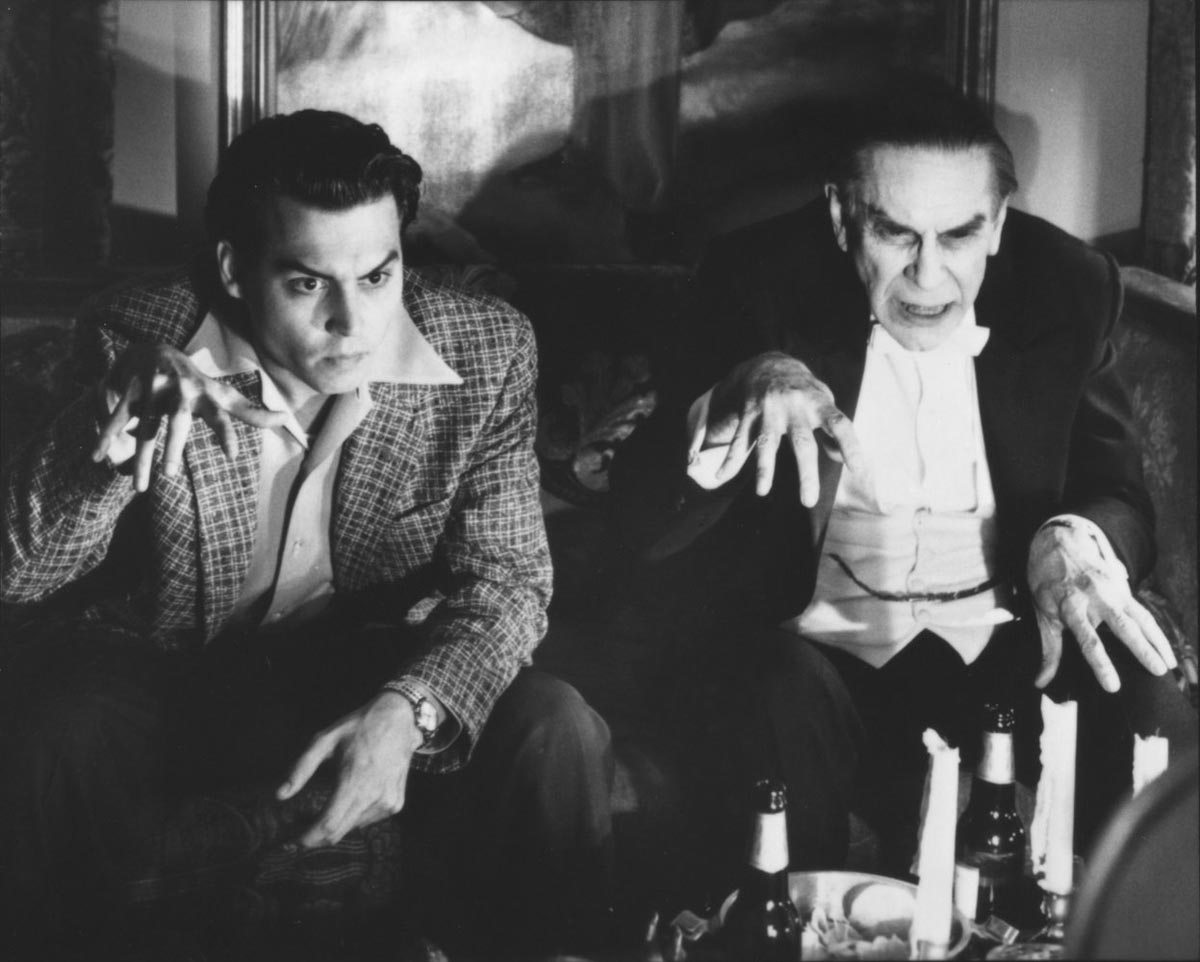
And this passion is felt throughout Burton’s picture, led by Depp’s touching, stylized and sensitive performance. Depp plays up the humor and largeness of Wood’s personality without falling into a caricature, without making him a cartoon; he never loses himself in stylization at the expense of Wood’s humanity. The spirit and affectation of Wood is part of his poignancy – that he was a showman, selling himself, but in quieter moments, a man distressed at a bar, or awake at night wondering if he’s any good, or a true friend helping out his pal and star, Lugosi (a splendid, at times, heartbreaking Martin Landau), while the poor man is in the throes of morphine addiction, and in one terrifying scene, shot like a horror movie, withdrawal. Though Ed’s relationship with Dolores Fuller (Sarah Jessica Parker) is a large part of the story, and her leaving Wood (she went on to great success writing songs for Elvis), and his marriage to sweet Kathy (Patricia Arquette, who knits black booties for Lugosi while he dries out) is chronicled here, it’s Wood’s relationship with Lugosi that’s the heart and soul of the picture.
The grand, fallen icon, an elegant Hungarian who starred, with much acclaim, in Tod Browning’s Dracula, is beset by addiction, poverty and career crisis. Lugosi is both Wood’s muse and a lure for money (he’s his only big name). Those in Wood’s orbit claimed he was true blue, Lugosi’s son saw him as an exploiter. The truth may reside somewhere in the middle, but Lugosi both by name and presence, moved Wood artistically as much as his beloved angora sweaters. That he finds unique ways to merge these two obsessions is intriguing, and in some cases, a potent work of artful, experimental (accidental, but who cares? It works) collage. Had Wood made some of his films (Glen or Glenda in particular) in the Warhol Factory or anywhere near the vicinity of Maya Deren, perhaps they would be viewed differently. Clearly, I’ve never agreed with the Michael and Harry Medved book, “The Golden Turkey Awards,” in which they rank Wood the worst filmmaker of all time and Plan 9 the worst film (and in 1980, two years after poor Wood died), but at least that book brought Wood further from obscurity, even if the “honor” is a negative one and posthumous. Anything that provokes such strong response, well, I want to see that.
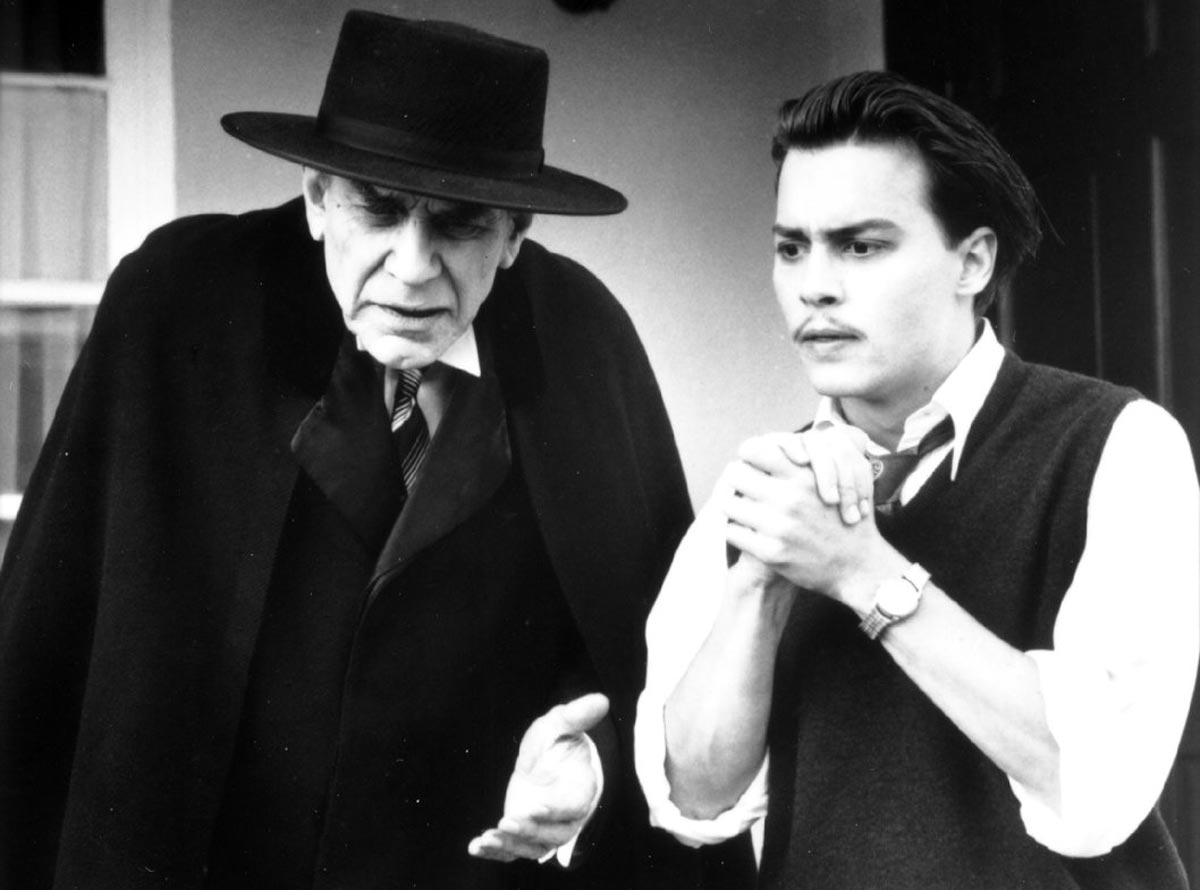
Burton doesn’t hang heavily on the “worst” title, though he’s not claiming Wood as Orson Welles either. But he delights in Wood’s process. Eschewing biopic standards of cramming an entire life into feature length time, Burton and his writers chose five years of Wood’s world instead – as the director moved from poorly reviewed stage plays to his movies made with Lugosi (and finishing one with a chiropractor stand-in after Lugosi died). There is a poignant power in chronicling Wood’s life as he was scrambling, young and eager, involved in cockamamie funding dramas (the baptism scene is a highlight), while surrounded by various eccentrics, his friends, his cast and crew: The Amazing Criswell (Jeffrey Jones), Bunny Breckinridge (Bill Murray), Vampira/Maila Nurmi (Lisa Marie), Tor Johnson (George “The Animal” Steele), Paul Marco (Max Casella), Conrad Brooks (Brent Hinkley) and Loretta King (Juliet Landau). The man had interesting friends, and to his immense credit, and especially for the early 1950’s, Wood did not judge them for their varied eccentricities.
Ed Wood shows a Los Angeles underground, three, four, five steps away from the real stars, a story that’s not told enough but one that exists to this day. There’s Ed Woods all over the place. And that L.A. is exquisitely shot in black and white by Stefan Czapsky, reveling in the high-low beauty of Hollywood – highlighting the drama not just narratively, but cinematically, how anything can happen in this town. A splendidly lit, famously made-up scene shows Wood (in drag) frustratingly drinking at Musso and Frank where he spies his idol, Orson Welles (Vincent D’Onofrio), alone in a booth. Wood approaches as a fan, introduces himself, sits down and is offered this bit of advice from the genius: “Visions are worth fighting for. Why spend your life making someone else’s dreams?” It’s a lovely moment, and doubly poignant considering how much fighting Welles had to do in his career. It also, again, never happened but . . . it could have. You still never know who you’ll run into at Musso’s. Alas, later in life, Wood probably didn’t frequent that place much anymore. He couldn’t afford it.
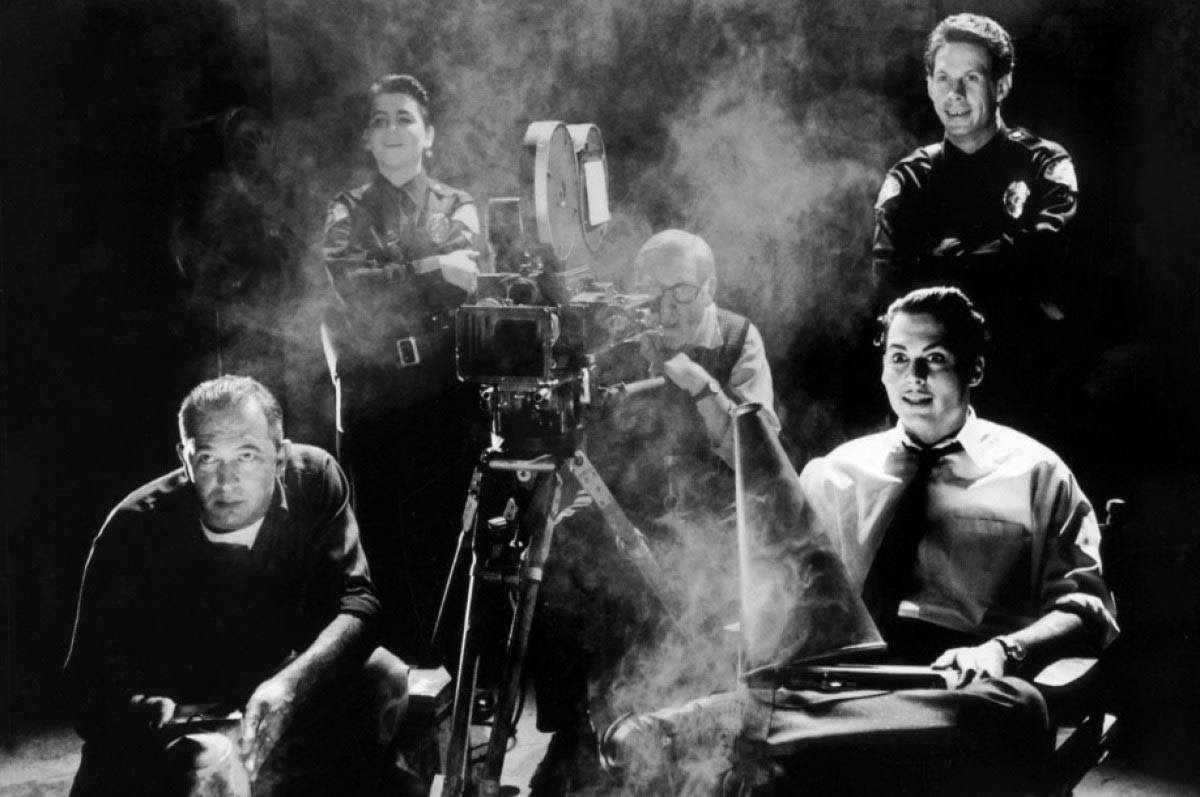
As Alexander and Karaszewski had stated, this is not a success story, the hero is not going to make it big by the end. Indeed, in real life, all of Wood’s lovable enthusiasm and hope would end with a guy dying a hopeless alcoholic at 54, kicked out of his dangerous, fleabag apartment on Yucca and Cahuenga. Reading Rudolph Grey’s oral history of Wood, “Nightmare of Ecstasy” (from which the picture was adapted), you take in many of the sordid details, noting how much the alcoholism took over the man’s life. As sad and as wretched as his life became, you’re still impressed – impressed that he actually continued to create anything, whether sleaze films or porno books or even that he managed to get across the street to the Pla-Boy liquor (which still stands, as does Wood’s old apartment) alive (he was continually robbed). Wife Kathy Wood said of when he died, “As long as I live, I’ll never forget the look in his eyes. He had this awful expression . . . It looked like he’d just seen hell. What do you suppose he saw in those last few moments? What do you suppose he saw?”
He didn’t see the magnificent Ed Wood coming. But, who knows? No one is a reliable narrator, so perhaps, at one point, he did. Honored in all of his terrible/good/bad/great glory, Ed Wood is a love letter to a man, and to everyone, really, who persists with their real selves intact, in this impossible town. In Plan 9 from Outer Space, Criswell’s intones: “We are all interested in the future, for that is where you and I are going to spend the rest of our lives.” Perhaps Wood’s endless dreaming and believing in himself, no matter how desperate and awful his life became, made him have confidence that a kind of notoriety could be possible. Wood continued on, after all, in various conditions, and no matter your opinion of the pictures, his soul and hopes and singularity seeped into them so much that they projected an imperishable power that carried these works into the future, protecting them from total oblivion. Take his films however you like, but they will not be forgotten. And, all these years later, from Glen or Glenda of 1953 to Ed Wood of 1994 to the 2017 of now, neither will he.

